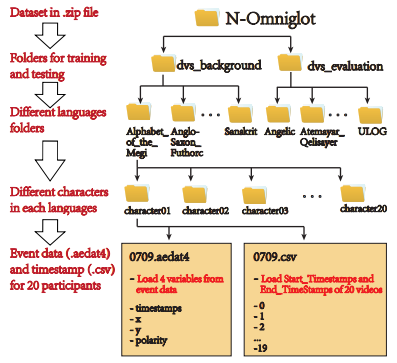N-Omniglot, a large-scale neuromorphic dataset for spatio-temporal sparse few-shot learning
Few-shot learning (learning with a few samples) is one of the most important cognitive abilities of the human brain. However, the current artificial intelligence systems meet difficulties in achieving this ability. Similar challenges also exist for biologically plausible spiking neural networks (SNNs). Datasets for traditional few-shot learning domains provide few amounts of temporal information. and the absence of neuromorphic datasets has hindered the development of few-shot learning for SNNs. Here, to the best of our knowledge, we provide the first neuromorphic dataset for few-shot learning using SNNs: N-Omniglot, based on the Dynamic Vision Sensor. It contains 1,623 categories of handwritten characters, with only 20 samples per class. N-Omniglot eliminates the need for a neuromorphic dataset for SNNs with high spareness and tremendous temporal coherence. Additionally, the dataset provides a powerful challenge and a suitable benchmark for developing SNNs algorithms in the few-shot learning domain due to the chronological information of strokes. We also provide the improved nearest neighbor, convolutional network, SiameseNet, and meta-learning algorithm in the spiking version for verification.
PDF Abstract



 N-Omniglot
N-Omniglot
 N-Caltech 101
N-Caltech 101